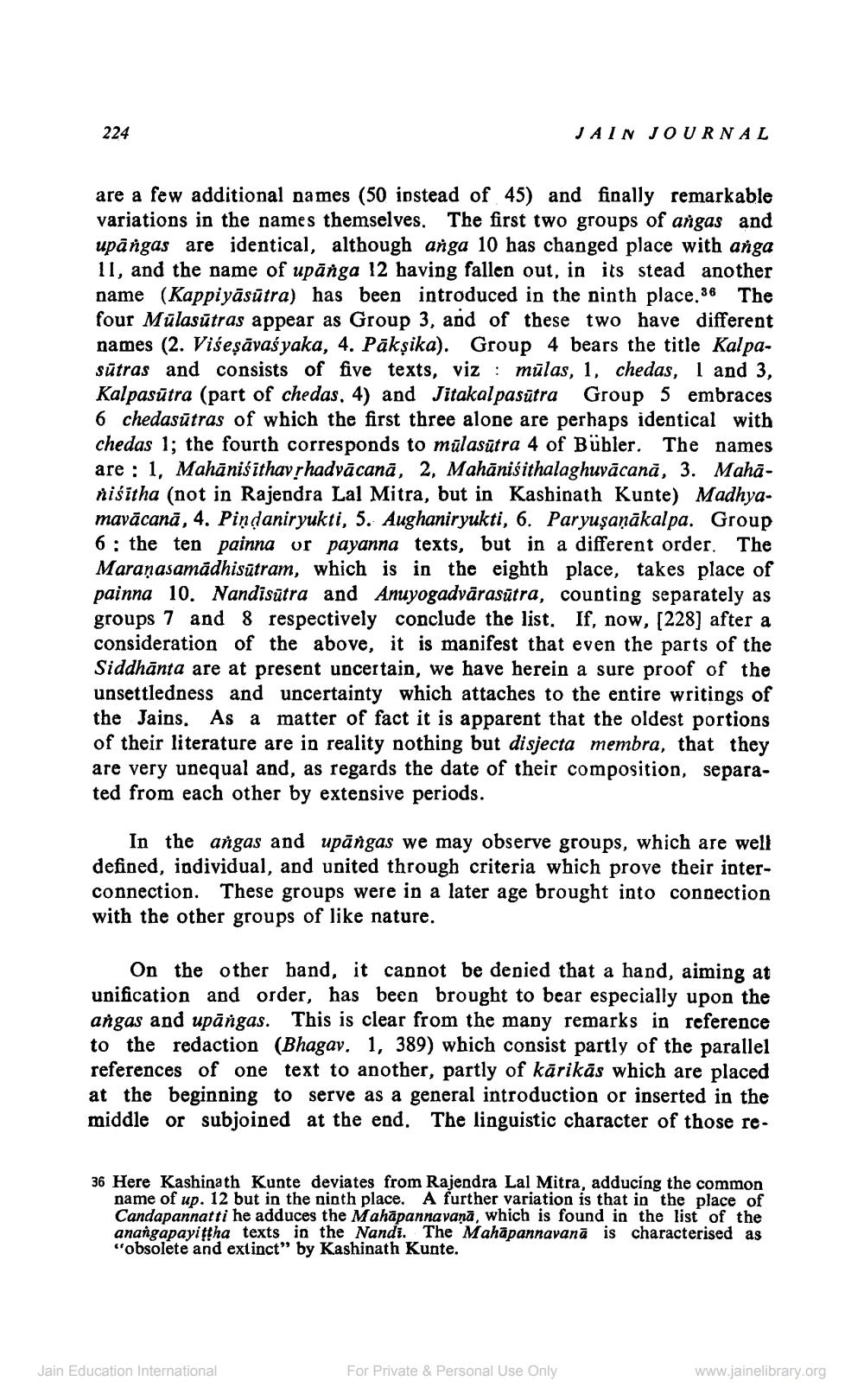________________
224
are a few additional names (50 instead of 45) and finally remarkable variations in the names themselves. The first two groups of angas and upangas are identical, although anga 10 has changed place with anga 11, and the name of upanga 12 having fallen out, in its stead another name (Kappiyāsūtra) has been introduced in the ninth place.36 The four Mulasūtras appear as Group 3, and of these two have different names (2. Višeṣāvasyaka, 4. Pākṣika). Group 4 bears the title Kalpasūtras and consists of five texts, viz mulas, 1, chedas, 1 and 3, Kalpasūtra (part of chedas, 4) and Jitakal pasūtra Group 5 embraces 6 chedasūtras of which the first three alone are perhaps identical with chedas 1; the fourth corresponds to mūlasūtra 4 of Bühler. The names are 1, Mahāniśīthavṛhadvācanā, 2, Mahāniśithalaghuvācană, 3. Mahānisitha (not in Rajendra Lal Mitra, but in Kashinath Kunte) Madhyamavācană, 4. Pindaniryukti, 5. Aughaniryukti, 6. Paryuṣaṇākalpa. Group 6 the ten painna or payanna texts, but in a different order. The Maraṇasamādhisūtram, which is in the eighth place, takes place of painna 10. Nandisūtra and Anuyogadvārasūtra, counting separately as groups 7 and 8 respectively conclude the list. If, now, [228] after a consideration of the above, it is manifest that even the parts of the Siddhanta are at present uncertain, we have herein a sure proof of the unsettledness and uncertainty which attaches to the entire writings of the Jains. As a matter of fact it is apparent that the oldest portions of their literature are in reality nothing but disjecta membra, that they are very unequal and, as regards the date of their composition, separated from each other by extensive periods.
JAIN JOURNAL
In the angas and upangas we may observe groups, which are well defined, individual, and united through criteria which prove their interconnection. These groups were in a later age brought into connection with the other groups of like nature.
On the other hand, it cannot be denied that a hand, aiming at unification and order, has been brought to bear especially upon the angas and upangas. This is clear from the many remarks in reference to the redaction (Bhagav. 1, 389) which consist partly of the parallel references of one text to another, partly of kärikäs which are placed at the beginning to serve as a general introduction or inserted in the middle or subjoined at the end. The linguistic character of those re
36 Here Kashinath Kunte deviates from Rajendra Lal Mitra, adducing the common name of up. 12 but in the ninth place. A further variation is that in the place of Candapannatti he adduces the Mahapannavana, which is found in the list of the anangapayittha texts in the Nandi. The Mahapannavana is characterised as "obsolete and extinct" by Kashinath Kunte.
Jain Education International
For Private & Personal Use Only
www.jainelibrary.org




